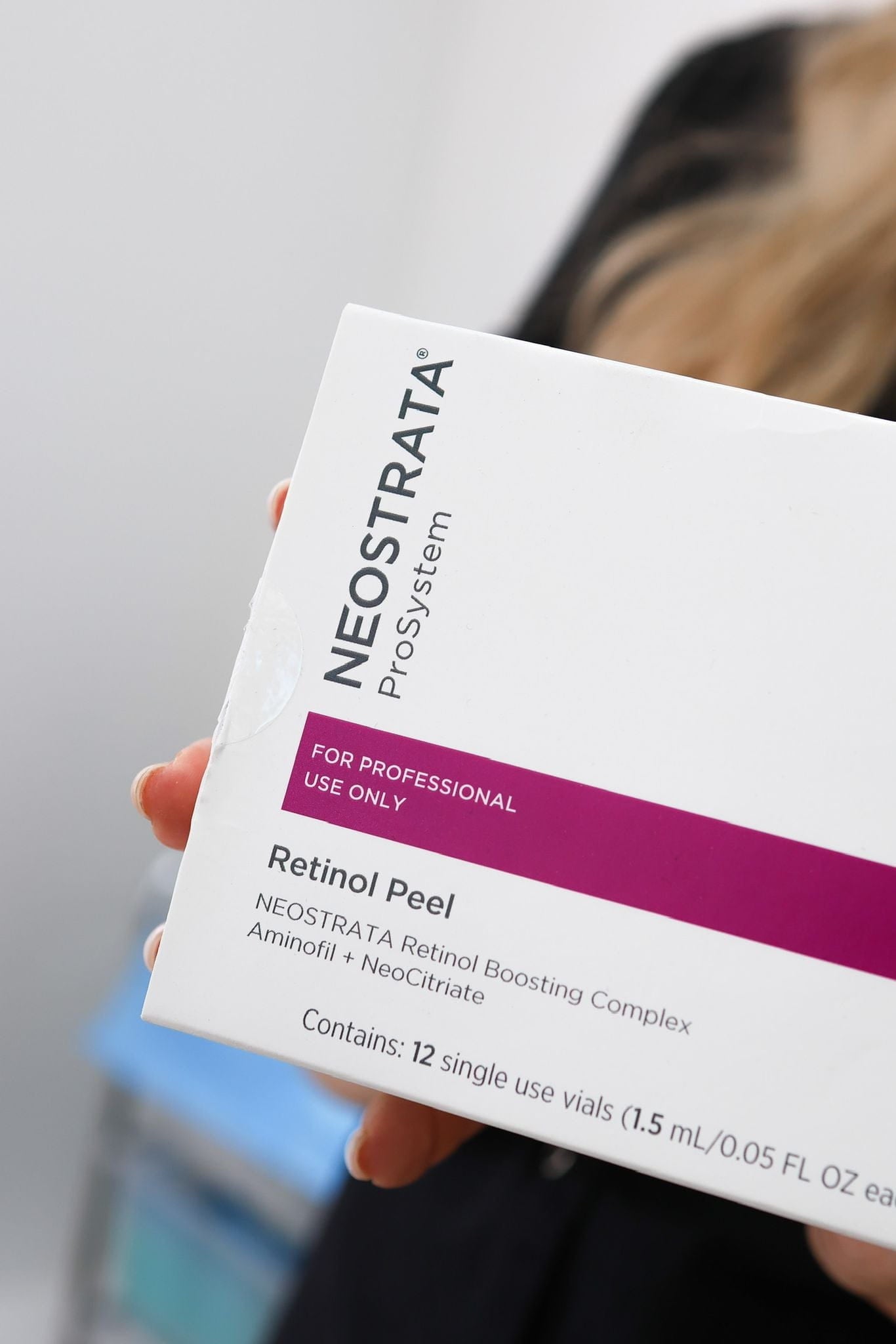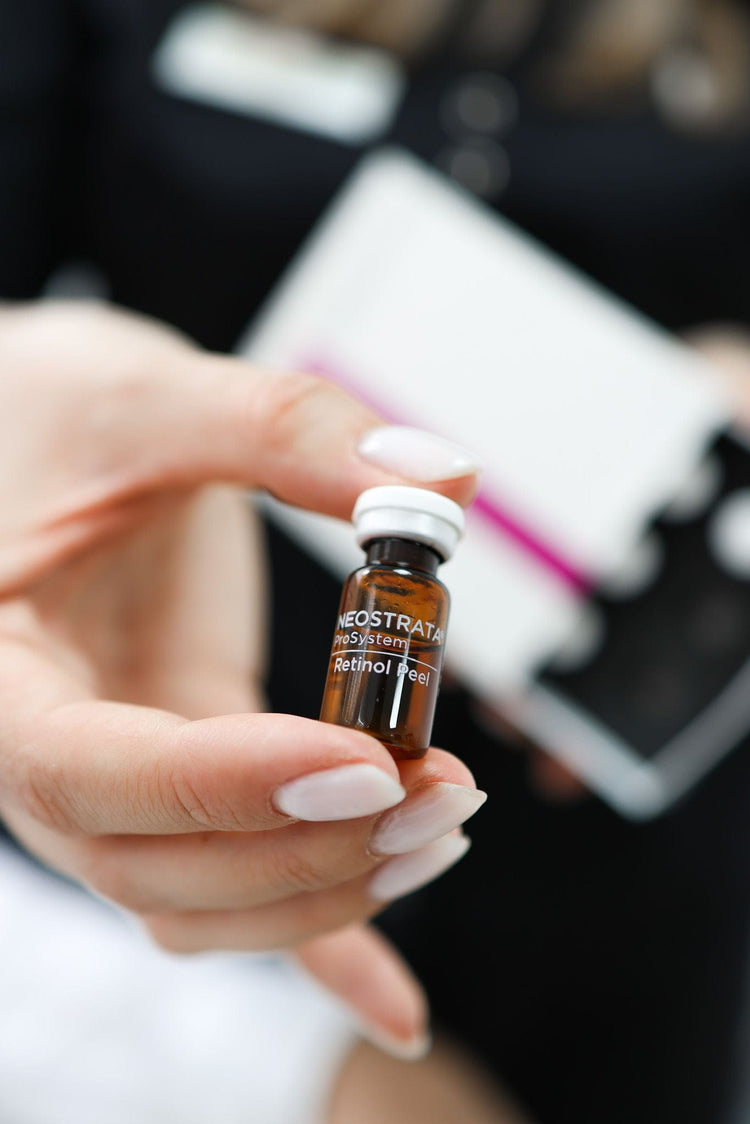Frequency of Retinol Peels

Retinol peels are becoming increasingly popular as a way to achieve brighter, smoother skin. These chemical peels utilize the powerful ingredient retinol, known for its ability to stimulate collagen production and reduce the appearance of fine lines and wrinkles. However, determining the right frequency for retinol peels is crucial to maximize benefits while minimizing potential irritation.
Individual Needs
The frequency of retinol peels should be tailored to individual needs and skin type. Beginners may start with a peel every 4-6 weeks, gradually increasing the frequency as their skin tolerates it. Individuals with sensitive skin might require longer intervals between treatments, such as every 6-8 weeks or even monthly. Factors like age, sun exposure, and existing skin concerns also influence the ideal frequency. Consulting a qualified esthetician or dermatologist in Kingston Upon Thames is essential for personalized guidance on retinol peel frequency and overall skincare regimen.
Skin Type and Sensitivity
The optimal frequency of retinol peels varies depending on individual factors such as skin type and sensitivity. Beginners are generally recommended to start with treatments every 4-6 weeks, gradually increasing the frequency as their skin adjusts. Individuals with sensitive skin may need longer intervals between peels, such as every 6-8 weeks or monthly.
Age, sun exposure history, and existing skin concerns also play a role in determining the ideal frequency. Consulting a qualified esthetician or dermatologist in Kingston Upon Thames is crucial for personalized recommendations on retinol peel frequency and a tailored skincare plan.
Desired Results
The frequency of retinol peels should be tailored to your individual needs and skin type.
- Beginners may start with a peel every 4-6 weeks, gradually increasing the frequency as their skin tolerates it.
- Individuals with sensitive skin might require longer intervals between treatments, such as every 6-8 weeks or even monthly.
- Factors like age, sun exposure, and existing skin concerns also influence the ideal frequency.
Professional Recommendations
The optimal frequency of retinol peels varies depending on individual factors such as skin type and sensitivity. Beginners are generally recommended to start with treatments every 4-6 weeks, gradually increasing the frequency as their skin adjusts. Individuals with sensitive skin may need longer intervals between peels, such as every 6-8 weeks or monthly.
Age, sun exposure history, and existing skin concerns also play a role in determining the ideal frequency. Consulting a qualified esthetician or dermatologist is crucial for personalized recommendations on retinol peel frequency and a tailored skincare plan.
Factors Affecting Peel Frequency
Determining how often to have a retinol peel depends on several factors unique to each individual.
Treatment Intensity
The frequency of retinol peels should be tailored to your individual needs and skin type.
- Beginners may start with a peel every 4-6 weeks, gradually increasing the frequency as their skin tolerates it.
- Individuals with sensitive skin might require longer intervals between treatments, such as every 6-8 weeks or even monthly.
- Factors like age, sun exposure, and existing skin concerns also influence the ideal frequency.
Treatment intensity can also be adjusted based on individual needs. Some people may benefit from a more superficial peel, while others may require a deeper treatment for more significant skin concerns. A qualified esthetician or dermatologist can help determine the appropriate depth for your peel, considering your skin type, goals, and medical history.
Skin Condition
Determining how often to have a retinol peel depends on several factors unique to each individual.
- Beginners may start with a peel every 4-6 weeks, gradually increasing the frequency as their skin tolerates it.
- Individuals with sensitive skin might require longer intervals between treatments, such as every 6-8 weeks or even monthly.
- Factors like age, sun exposure, and existing skin concerns also influence the ideal frequency.
Treatment intensity can also be adjusted based on individual needs. Some people may benefit from a more superficial peel, while others may require a deeper treatment for more significant skin concerns. A qualified esthetician or dermatologist can help determine the appropriate depth for your peel, considering your skin type, goals, and medical history.
Sun Exposure
Sun exposure is a crucial factor influencing retinol peel frequency. Excessive sun exposure can make skin more sensitive and prone to irritation, potentially requiring longer intervals between peels.
Individuals with significant sun damage may need to start with less frequent peels and gradually increase the frequency as their skin adapts. It’s essential to protect your skin from the sun with sunscreen daily, especially before and after a retinol peel.
Aftercare Instructions for Optimal Results
Determining the ideal frequency for retinol peels is crucial for maximizing benefits while minimizing potential irritation.
Moisturizing Routine
Aftercare instructions are essential for optimal results from a retinol peel. Your skin will be more sensitive after treatment, so it’s important to follow these guidelines carefully:
During the first few days following your peel, avoid direct sun exposure and use a broad-spectrum sunscreen with an SPF of 30 or higher religiously. Gentle cleansing is key; stick to mild cleansers and lukewarm water. Avoid harsh scrubs or exfoliants, as they can irritate already sensitive skin.
Moisturizing is crucial for healing and preventing dryness. Choose a hydrating moisturizer formulated for sensitive skin and apply it several times a day as needed.
Avoid using any products containing retinol or other strong actives until your skin has fully recovered. This allows your skin to heal properly and reduces the risk of irritation or allergic reactions.
If you experience excessive redness, itching, or any unusual symptoms, consult your esthetician or dermatologist immediately.
Sun Protection
Determining the ideal frequency for retinol peels is crucial for maximizing benefits while minimizing potential irritation.
Aftercare instructions are essential for optimal results from a retinol peel. Your skin will be more sensitive after treatment, so it’s important to follow these guidelines carefully:
During the first few days following your peel, avoid direct sun exposure and use a broad-spectrum sunscreen with an SPF of 30 or higher religiously. Gentle cleansing is key; stick to mild cleansers and lukewarm water. Avoid harsh scrubs or exfoliants, as they can irritate already sensitive skin.
Moisturizing is crucial for healing and preventing dryness. Choose a hydrating moisturizer formulated for sensitive skin and apply it several times a day as needed.
Avoid using any products containing retinol or other strong actives until your skin has fully recovered. This allows your skin to heal properly and reduces the risk of irritation or allergic reactions.
If you experience excessive redness, itching, or any unusual symptoms, consult your esthetician or dermatologist immediately.
Sun Protection in language English
Retinol is a powerful ingredient that increases skin sensitivity to the sun. It’s crucial to protect your skin from UV rays by wearing sunscreen daily, especially after a retinol peel.
Choose a broad-spectrum sunscreen with an SPF of 30 or higher and apply it liberally to all exposed skin. Reapply every two hours, especially after swimming or sweating.
Avoiding Irritation
Aftercare instructions are essential for optimal results from a retinol peel. Your skin will be more sensitive after treatment, so it’s important to follow these guidelines carefully:
During the first few days following your peel, avoid direct sun exposure and use a broad-spectrum sunscreen with an SPF of 30 or higher religiously. Gentle cleansing is key; stick to mild cleansers and lukewarm water. Avoid harsh scrubs or exfoliants, as they can irritate already sensitive skin.
Moisturizing is crucial for healing and preventing dryness. Choose a hydrating moisturizer formulated for sensitive skin and apply it several times a day as needed.
Avoid using any products containing retinol or other strong actives until your skin has fully recovered. This allows your skin to heal properly and reduces the risk of irritation or allergic reactions.
If you experience excessive redness, itching, or any unusual symptoms, consult your esthetician or dermatologist immediately.
Sun Protection in language English
Retinol is a powerful ingredient that increases skin sensitivity to the sun. It’s crucial to protect your skin from UV rays by wearing sunscreen daily, especially after a retinol peel. Choose a broad-spectrum sunscreen with an SPF of 30 or higher and apply it liberally to all exposed skin. Reapply every two hours, especially after swimming or sweating.
Conclusion
Determining the ideal frequency for retinol peels is crucial for maximizing benefits while minimizing potential irritation.
Aftercare instructions are essential for optimal results from a retinol peel. Your skin will be more sensitive after treatment, so it’s important to follow these guidelines carefully:
During the first few days following your peel, avoid direct sun exposure and use a broad-spectrum sunscreen with an SPF of 30 or higher religiously. Gentle cleansing is key; stick to mild cleansers and lukewarm water. Avoid harsh scrubs or exfoliants, as they can irritate already sensitive skin.
Moisturizing is crucial for healing and preventing dryness. Choose a hydrating moisturizer formulated for sensitive skin and apply it several times a day as needed.
Avoid using any products containing retinol or other strong actives until your skin has fully recovered. This allows your skin to heal properly and reduces the risk of irritation or allergic reactions.
If you experience excessive redness, itching, or any unusual symptoms, consult your esthetician or dermatologist immediately.
Sun Protection in language English
Retinol is a powerful ingredient that increases skin sensitivity to the sun. It’s crucial to protect your skin from UV rays by wearing sunscreen daily, especially after a retinol peel.
Choose a broad-spectrum sunscreen with an SPF of 30 or higher and apply it liberally to all exposed skin. Reapply every two hours, especially after swimming or sweating.
In conclusion,
the frequency of retinol peels should be tailored to your individual needs and skin type.

Start with a less frequent schedule and gradually increase as tolerated. Pay close attention to your skin’s response and consult a qualified esthetician or dermatologist for personalized recommendations.
Remember to prioritize sun protection and follow aftercare instructions diligently to maximize the benefits of retinol peels and achieve healthy, radiant skin.
- Upper Face Anti Wrinkle Treatment Near Thornton Heath, Surrey - December 3, 2025
- Upper Face Anti Wrinkle Treatment Near Farncombe, Surrey - December 2, 2025
- Troubleshooting Vista Edge Vape Issues: Common Problems And Fixes - November 30, 2025
